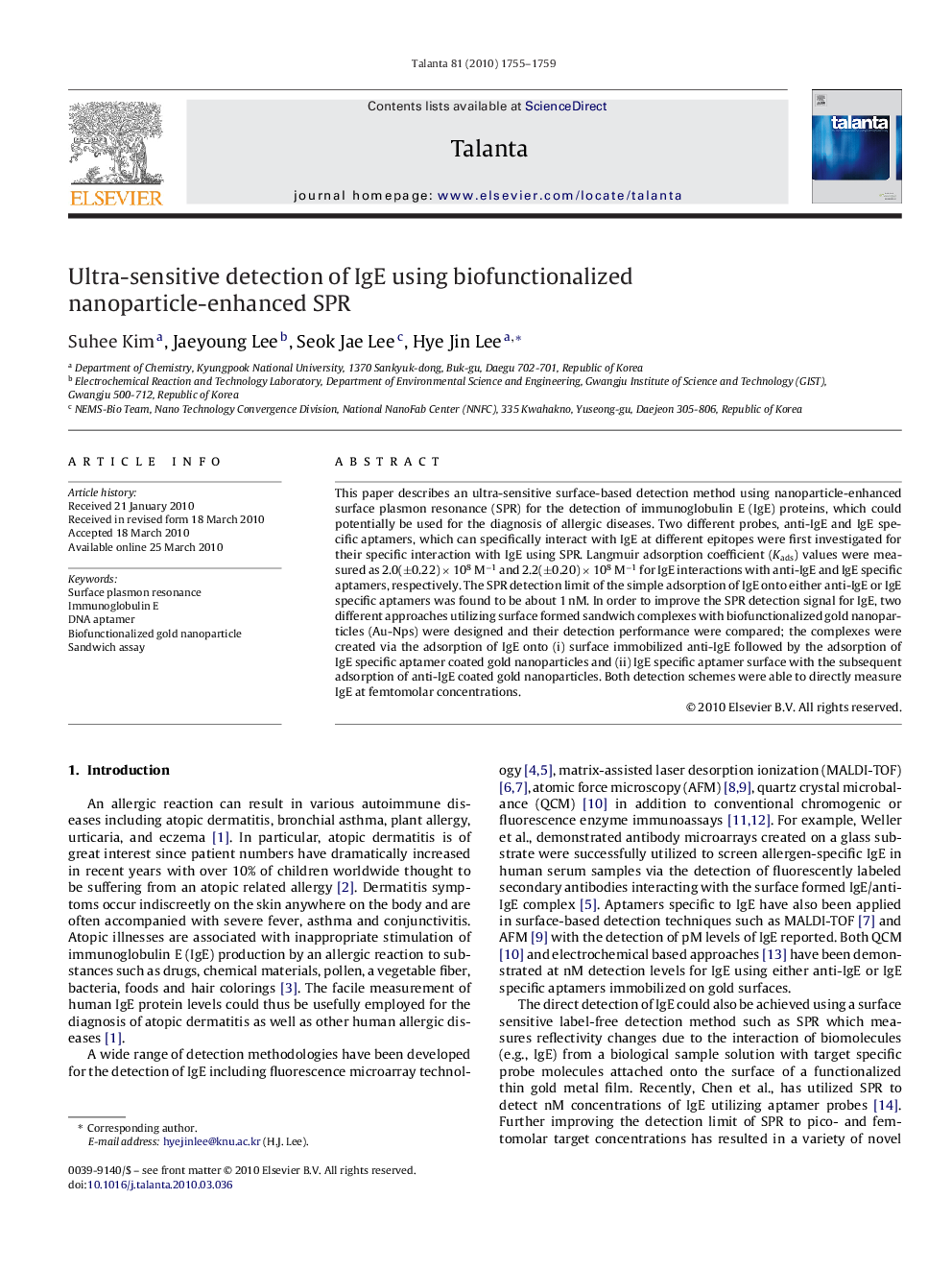| Article ID | Journal | Published Year | Pages | File Type |
|---|---|---|---|---|
| 1242700 | Talanta | 2010 | 5 Pages |
This paper describes an ultra-sensitive surface-based detection method using nanoparticle-enhanced surface plasmon resonance (SPR) for the detection of immunoglobulin E (IgE) proteins, which could potentially be used for the diagnosis of allergic diseases. Two different probes, anti-IgE and IgE specific aptamers, which can specifically interact with IgE at different epitopes were first investigated for their specific interaction with IgE using SPR. Langmuir adsorption coefficient (Kads) values were measured as 2.0(±0.22) × 108 M−1 and 2.2(±0.20) × 108 M−1 for IgE interactions with anti-IgE and IgE specific aptamers, respectively. The SPR detection limit of the simple adsorption of IgE onto either anti-IgE or IgE specific aptamers was found to be about 1 nM. In order to improve the SPR detection signal for IgE, two different approaches utilizing surface formed sandwich complexes with biofunctionalized gold nanoparticles (Au-Nps) were designed and their detection performance were compared; the complexes were created via the adsorption of IgE onto (i) surface immobilized anti-IgE followed by the adsorption of IgE specific aptamer coated gold nanoparticles and (ii) IgE specific aptamer surface with the subsequent adsorption of anti-IgE coated gold nanoparticles. Both detection schemes were able to directly measure IgE at femtomolar concentrations.
